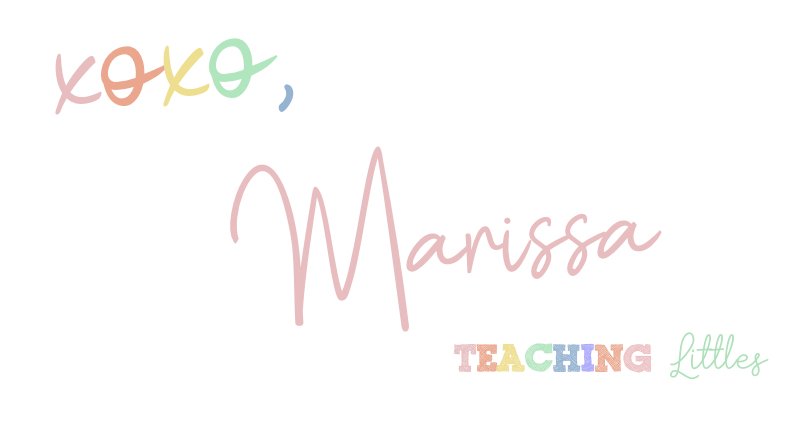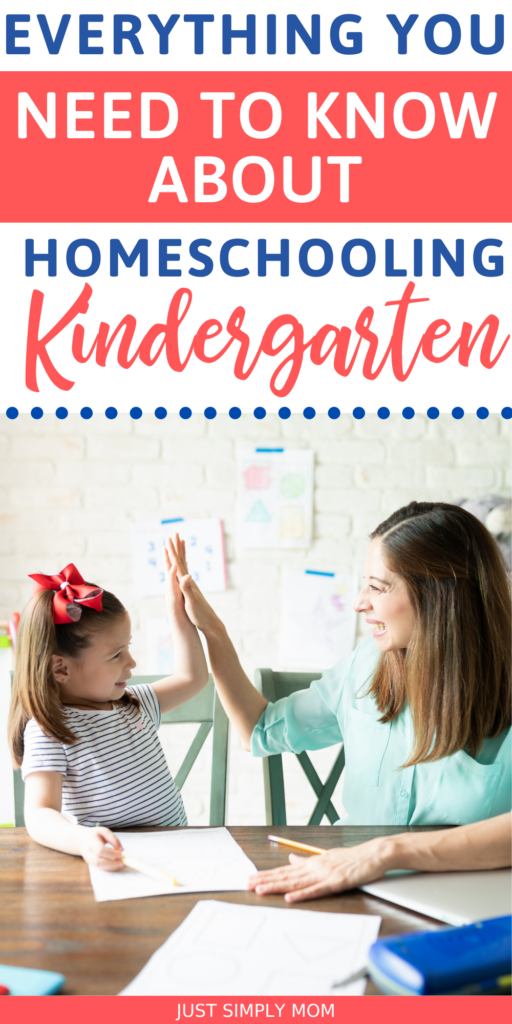Homeschooling Kindergarten is one of my favorite ages to homeschool. Kids at this age are still so full of wonder and curiosity, making homeschooling a breeze.
When you are homeschooling Kindergarten you should still be focusing the majority of the time on your child’s natural interests. However, there are of course a few skills you will want to be sure you are exposing your child to.
My best advice for homeschooling is to not get caught up in what your child SHOULD be doing – as most of these skills and deadlines are arbitrary. Instead, focus on what your child DOES know, while being sure to expose them to a multitude of opportunities to practice these skills (and others!)
Most of all – have fun!
Skills Taught In Kindergarten
If your child was to be enrolled in public school kindergarten, this would be the year they would learn basic concepts of math, reading, writing, shapes, and time. Kindergarten is still focused largely on mastering letters, sounds, and words. By the end of Kindergarten – MOST children will be taking their first steps toward reading, expanding their vocabulary, and should be able to write the letters of the alphabet.
This is also the year that your child would learn key fundamentals of math – by the end of the kindergarten year MOST children should be able to count to 30, recognize common shapes, and complete basic single-digit addition.
It is important to realize that educational standards vary largely across states, districts, and schools and no two children anywhere will learn at exactly the same rate.
The best thing you can do for your child at this age is to help them by building self-confidence in their learning – which will instill a love of learning and set them up for success along their educational journey!
Related Post: 107 Morning Affirmations for Students to Start the Day off Right
Homeschooling Kindergarten
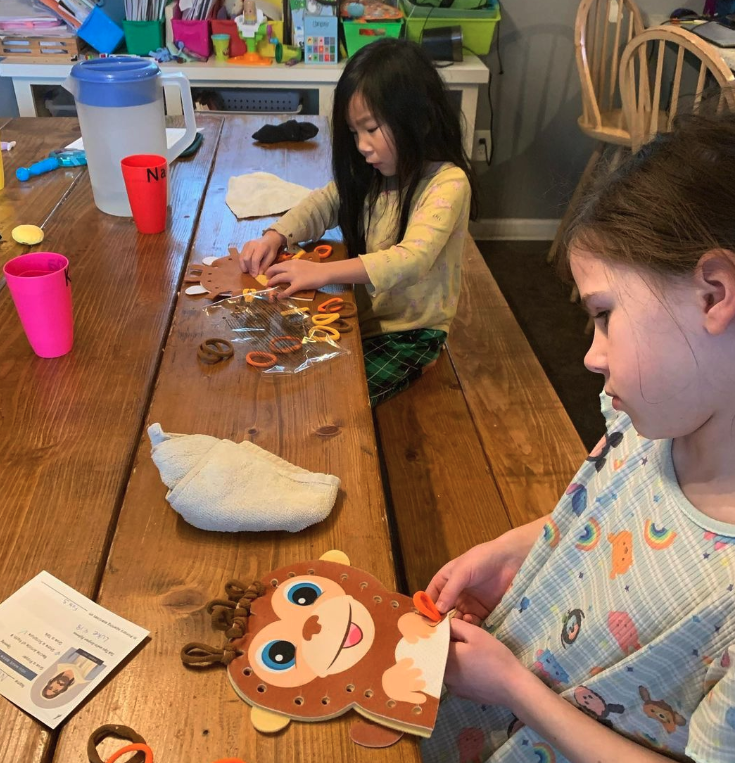
It feels intimidating when you start homeschooling for the first time, but let me reassure you, as long as you are working with your child, you’re doing good. A 4-year-old is just starting their education journey.
Let me break down the steps to start homeschooling kindergarten; it’s much easier than you imagine.
Know Your State Laws
The first thing you need to do is find out the laws of your state around homeschooling. Most states have requirements starting around Kindergarten age.
It is smart to be prepared and understand what the state expects from homeschooling families.
Pick Goals for the Year
Prioritize and write down what you want your child to learn this year, and keep in mind what your child needs to know for kindergarten.
Keep these goals written somewhere that gives you easy access to them so that you can mark them off when your child meets the goal.
Set Up an Area for Learning
Don’t feel like you need a homeschool room; most families don’t have an extra room for homeschooling.
Ideally, you will use a desk space, even if it’s just in a corner of your dining room. However, don’t feel upset if the couch ends up being your center for learning. If that’s the case, I suggest still having an area to hold your supplies and books.
Related Post: Homeschool Room Ideas
Create a Relaxed Schedule
A kindergartner really only needs a relaxed homeschool schedule. Lessons should be on the short side with plenty of play and art intermingled.
Kids at this age learn best when they’re playing and having a good time, so keep it simple yet enjoyable.
Connect with Your Local Homeschool Community
You might be surprised to learn that most areas have a homeschool community; homeschooling is the fastest-growing education sector in the United States.
Finding a community opens up so many options, and check with local businesses. Many gymnastics and dance schools provide lessons in the daytime specifically for homeschooling families.
Facebook is a great way to find local homeschool communities. Simply search for Homeschool Groups in your area.
Curriculum For Homeschooling Kindergarten
When deciding on homeschooling kindergarten – the curriculum is probably one of the first things on your mind. Before you can choose the perfect curriculum for your child you should ask yourself questions such as:
What is my child’s learning style?
What is our family’s learning style?
Will I be homeschooling multiple ages?
The answers to these questions can help you on your path to deciding which curriculum choice will be right for your family.
Play-Based Learning Curriculum for Homeschooling Kindergarten
Play-based curriculum allows children to learn the skills they need in a structured environment with the help and supervision of their teacher (or parent!).
Play-based curriculum works best for families who are open to the idea that learning happens all the time – and that interests and experiences can count as learning moments just as much as reading, writing, and math worksheets.
Harbor & Sprout

Harbor and Sprout is a play-based curriculum that is great for all ages. New Units come out frequently and you can choose based on your child’s current interests.
Each of the units includes 4 lessons per subject for a total of 36 lessons plus an extensive supplement section. You can get a sample pack of various units (including one lesson per subject) here.
Blossom and Root
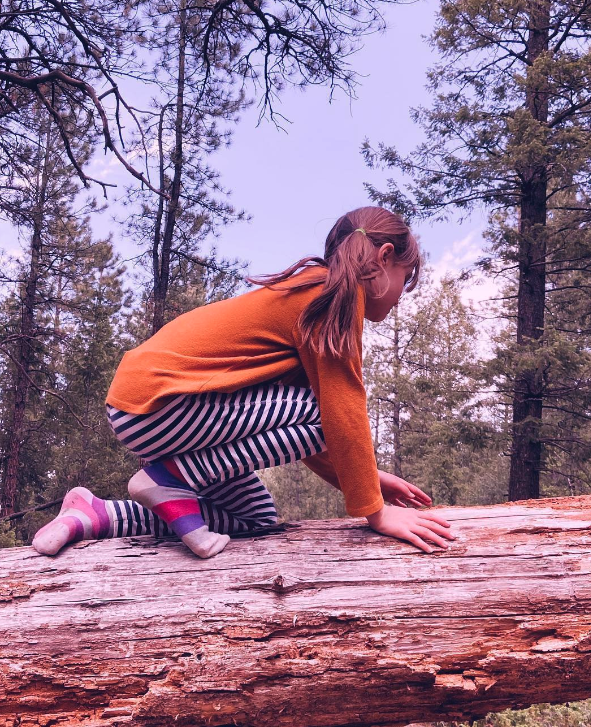
Blossom and Root is a homeschooling curriculum that really focuses on the idea that the world is your classroom. Blossom and Root has an entire Kindergarten curriculum that is playful, gentle, and an imaginative introduction to early academics.
Their hands-on secular kindergarten curriculum includes a picture and composer study, weekly art projects, nature study, literature, early reading and writing foundations, and an introduction to history and geography.
There is also a whimsical and adventurous math and science component.
You can find samples of this curriculum here.
Montessori Inspired Curriculum
Because Montessori is more of a philosophy rather than a defined program, any parent can create easily create a Montessori-inspired homeschool. A homeschool curriculum that follows the Montessori method is child-led with hands-on learning materials.
Multisori
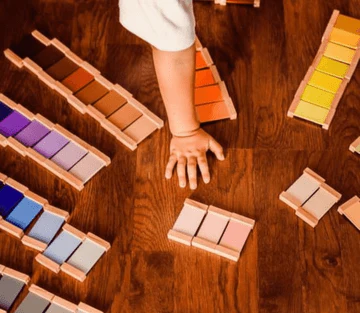
Multisori is a Montessori Inspired homeschooling curriculum that is crafted especially for parents. Unlike some of the other Montessori curriculums out there, it does not assume you have specific Montessori classroom materials.
It is visually engaging and works for multiple age groups.
This curriculum nurtures a child-centered education approach and makes it easy to prepare a thoughtful and attractive learning environment that focuses on the development of the whole child.
There is a free 161-page curriculum sample available here.
Montessori By Mom

Ignite a love of learning with exciting themed lessons!
Montessori by Mom got the homeschooling curriculum right with their themed curriculum boxes.
There are so many parents who go into Montessori homeschooling with no idea where to start.
These themed boxes are perfect for parents who have started Montessori but are a bit lost on what type of activities to introduce to their child.
The boxes are delivered right to your home and there are so many different ways you can expand on each theme. Explore the boxes here.
Multi-Age Curriculum
If you are homeschooling more than just your Kindergartner, choosing a multi-age curriculum can be beneficial.
Looking for a curriculum that can be used with a range of ages, and that is designed to be learned together as a family can be difficult.
Luckily for you – I’ve found several that can do just that!
Gather Round Homeschool
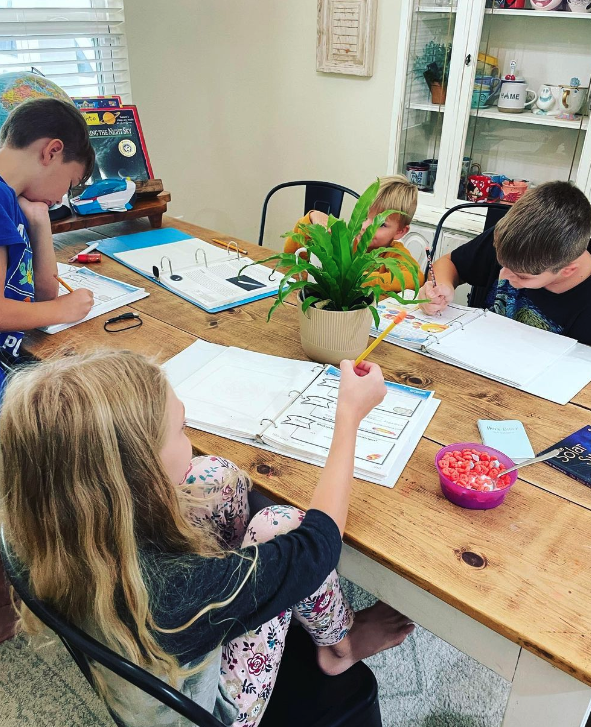
If you are a sucker for pretty curriculum – you will not be disappointed by Gather Round! The graphics throughout the teacher’s guide and student books are beautifully designed.
Gather round covers everything you need to teach all subjects for grades K-12, except math.
This curriculum is perfect for families who would like to teach multiple students at one time. You can get a sample of the curriculum here.
Related Post: The Best Tips to Teach Sight Words to Kindergarteners
Campfire Curriculum
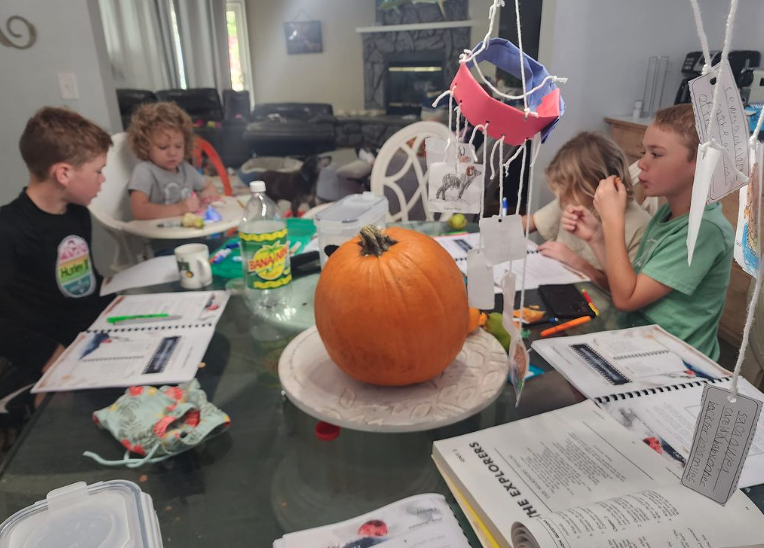
Campfire Curriculum is similar to Gather Round in that it follows unit studies that are designed to be taught to multiple children of varying ages at once. This curriculum can really be useful for parents who would like to simplify their homeschooling.
You can get free samples of this curriculum including eight total lessons here.
Related Post: Homeschool Room Ideas
Homeschooling Kindergarten Schedule Ideas
When it comes to a Kindergarten homeschool schedule, simple really is best. You can choose a schedule that works best for YOUR family, but if you need some inspiration try one of these!
A Daily Rhythm
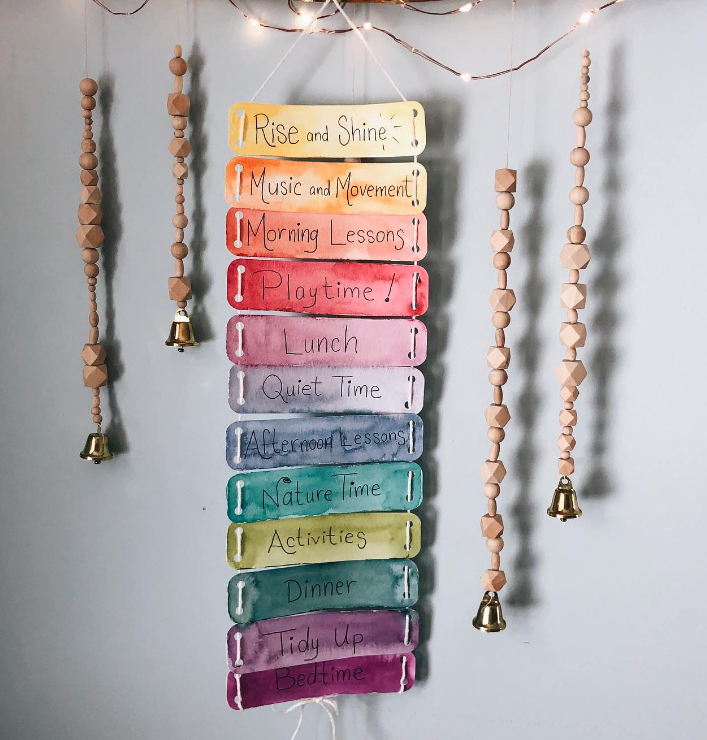
A daily rhythm can be a perfect choice when creating your homeschool routine. A rhythm leaves much more room for flexibility, and is not as harsh as a schedule can sometimes be.
Easily Customizable
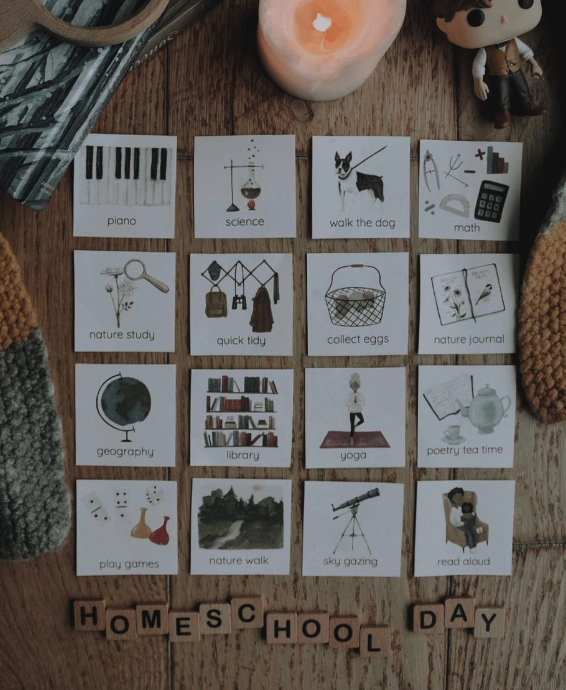
I like the idea of these daily rhythm cards as you can work with your child each night before bed, to choose the cards that get completed for the next day! You can get these easily customizable rhythm cards here.
Related Post: How to Homeschool a 4 Year Old
Spring Rhythm
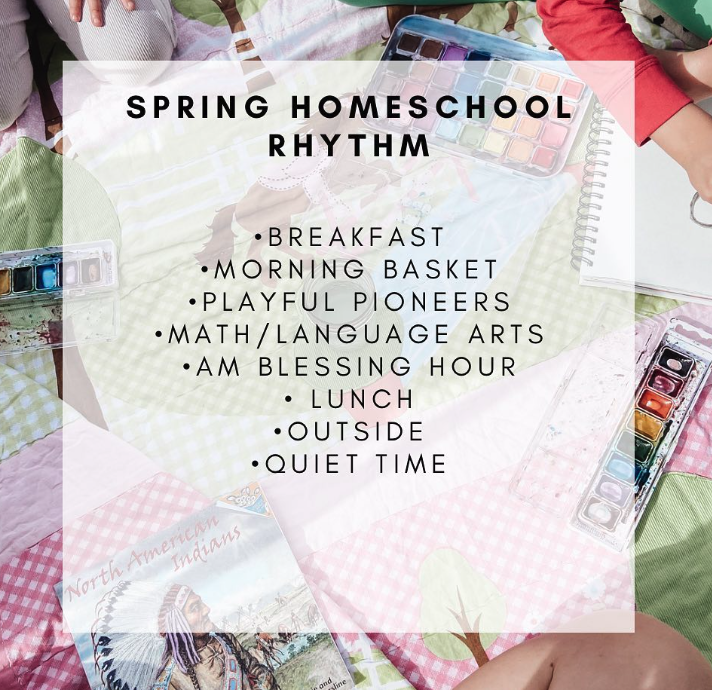
Changing your rhythm depending on the season can be really beneficial, for instance, you may want to move your outside time depending on the more enjoyable parts of the day.
I like this simple spring rhythm!
Time Blocks
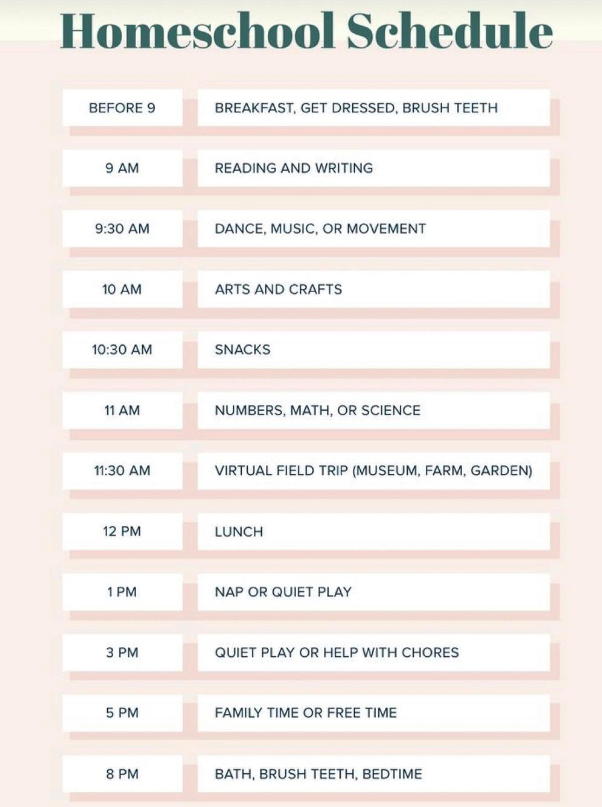
Although I do not typically recommend a very rigid schedule for Kindergarten, I understand that for some families it is what works best! If you are looking for an hour-by-hour breakdown of what a homeschooling kindergarten day could look like – this is a great one!
Hourly Schedule
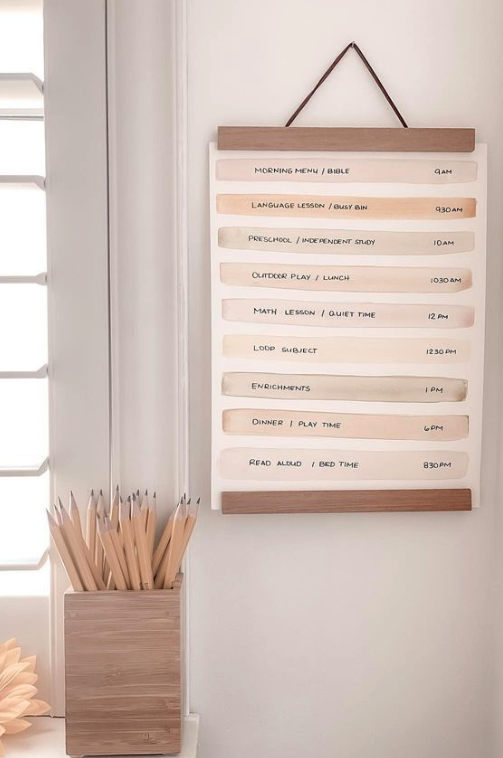
Here is another schedule that goes into hourly blocks of time. I like it because it provides plenty of opportunities for different experiences throughout the day.
Homeschooling Kindergarten Books List
Books are one of the most important parts of your homeschool. When homeschooling kindergarten it is important to choose books that will catch your child’s interest while also giving some great learning opportunities.
Here are a few of my favorites!
A Frog in the Bog
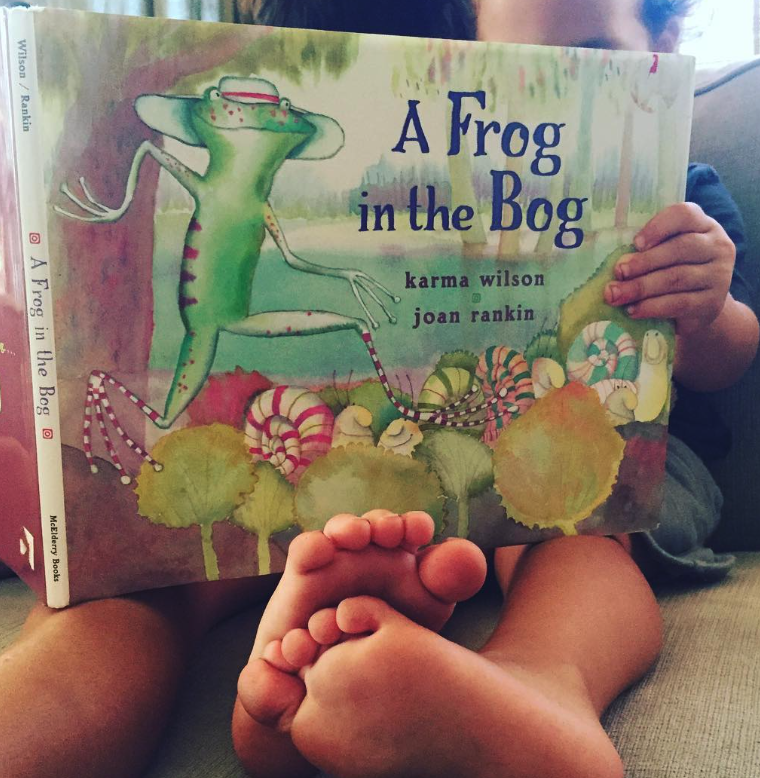
This is one of our favorite counting books! The bugs are fun, and there is a neat twist at the end. Plus the watercolor illustrations are beautiful!
Do You Have a Hat?
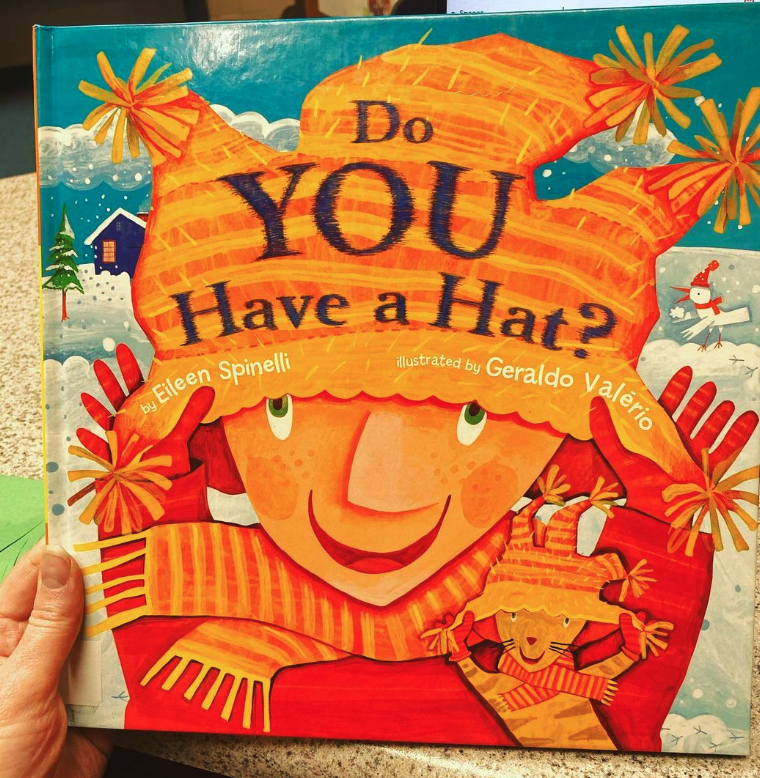
This book is a delightful trip through history. It introduces your child to thirteen historical figures and the headgear that they wore.
I love it because it really helps your child to see history in a way that makes sense to them.
Brown Bear Brown Bear What do You See?
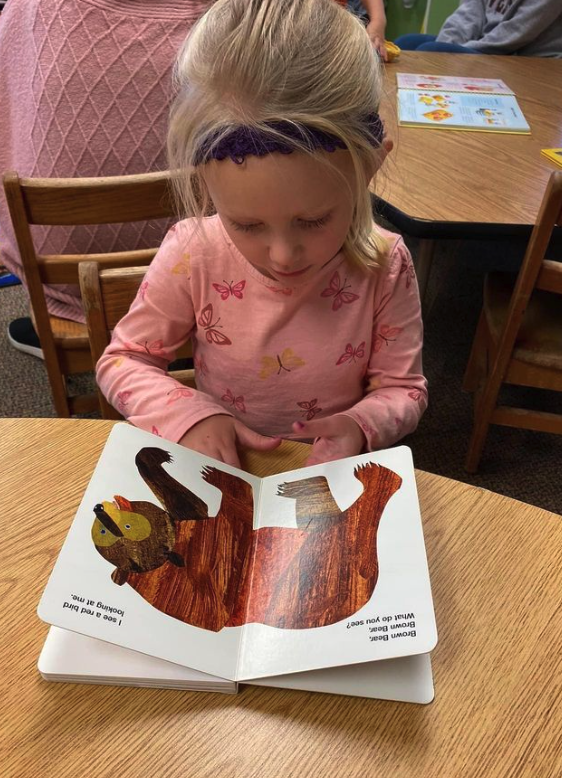
Brown Bear is a must-have in any homeschooled family. This story offers repetition and rhyme, while also teaching colors and identification. This book also offers so many opportunities for extended learning activities.
A Trapezoid is NOT a Dinosaur
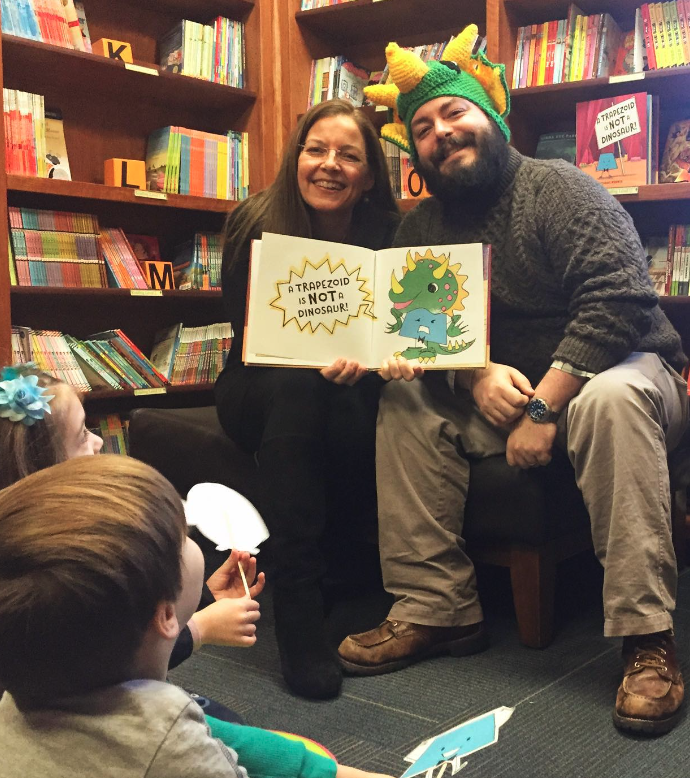
This is a wildly amusing, unconventional book about shapes and shape concepts. Trapezoid is here to declare that he is in fact, NOT a type of dinosaur.
Your kindergartener will love this book, and you will love all the fun concepts they are learning throughout!
If You Plant a Seed
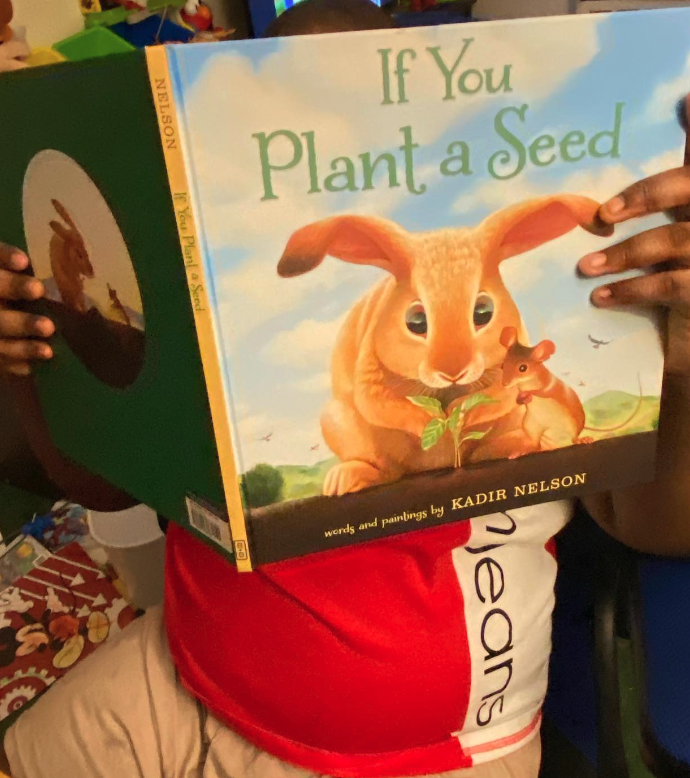
This is a bestselling book about the power of one kind act. It is a wonderful book about what could happen if you planted a seed of kindness. The breathtaking oil paintings in this picture book make the purchase well worth it!
This is My Home, This is My School
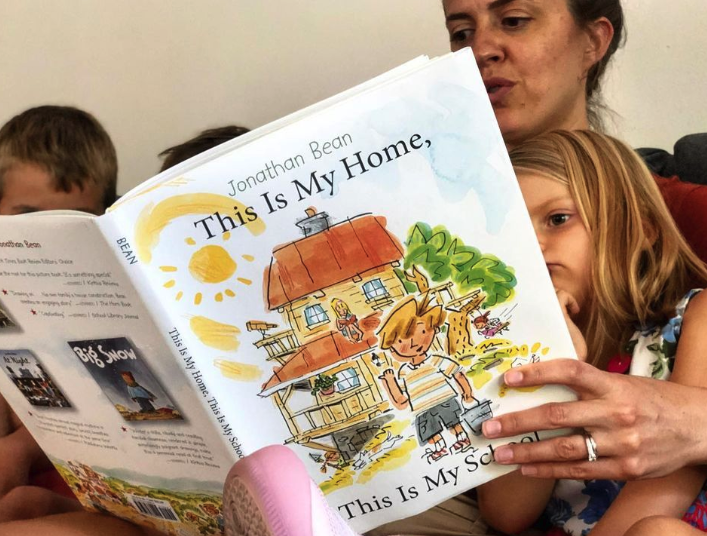
This is an autobiographically inspired book in which the author takes you through the special rhythms and routines of a homeschooling day. I love this book because it is a great relatable choice for your homeschooling child.
Related Post: 30 Books about Feelings for Preschoolers
Homeschooling Kindergarten Learning Games and Toys
An important part of homeschooling kindergarten is making sure your home is equipped with plenty of learning games and toys for your little one to choose from. Here are some of my favorites.
Monti Kids
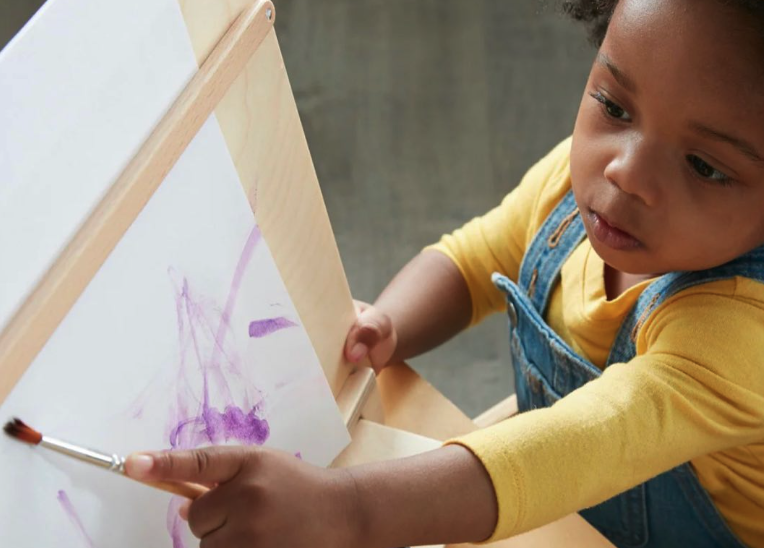
The design team at Monti Kids creates toys with play patterns to support all developmental milestones. These are more than just toys for your child, Monti Kids is here for you with online support, an expert-designed curriculum, 1-on-1 coaching, and more.
Linking Cubes
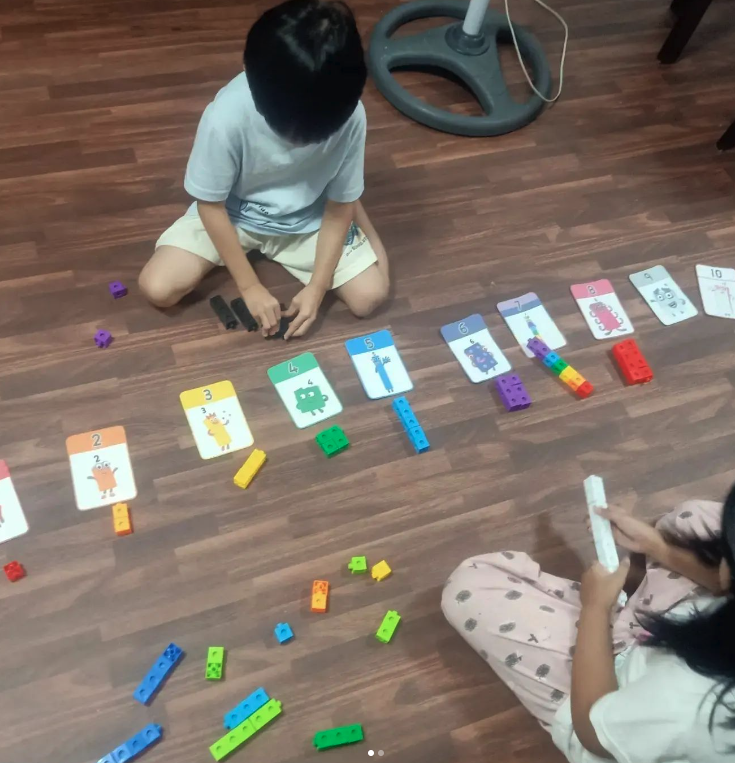
Linking cubes are a perfect homeschooling learning toy. They are so versatile and can be used in so many different learning opportunities. They are a staple for our family.
Sight Word Swat
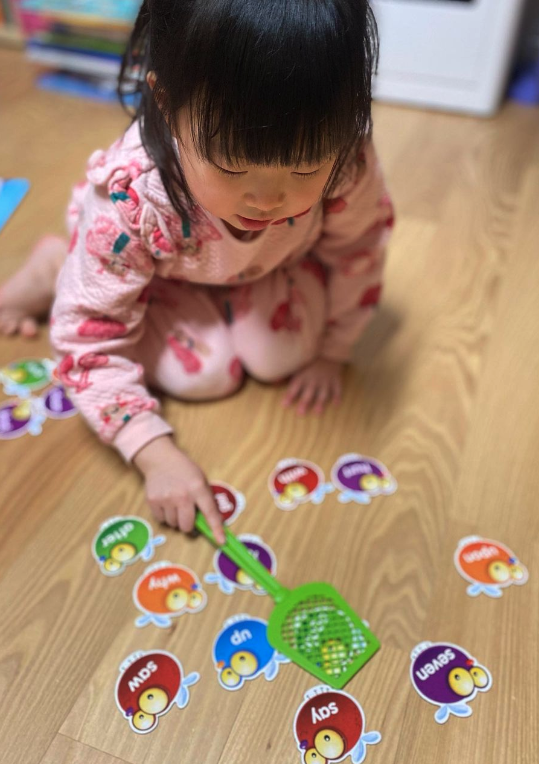
Building reading and vocabulary skills can be fun with the right materials! You can encourage your little one to discover 224 of the most commonly used sight words with this fun and fast-paced game.
Pattern Blocks
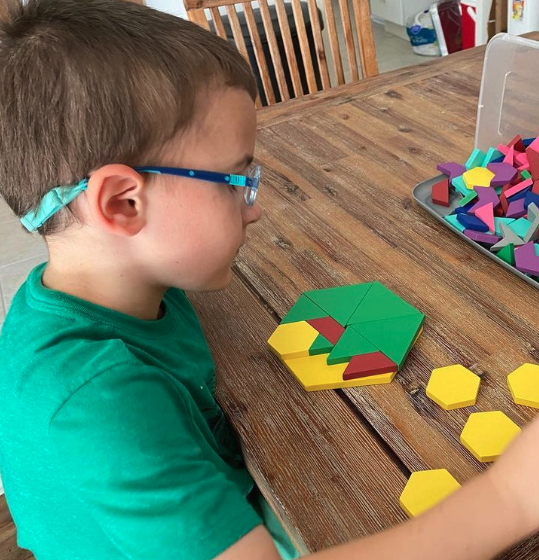
Pattern blocks are a staple for any homeschooling classroom! They are a perfectly fun way and creative way to explore math concepts such as shapes and symmetry.
Pretend Money
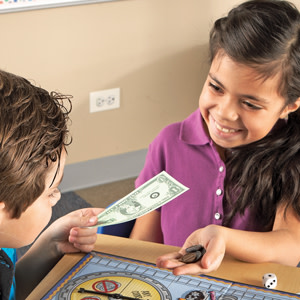
You can use this realistic play money to teach lessons in making change, identifying, plus adding and substracting. This set of play money also helps with imaginative play, and adds real-word fun to lessons!
Related Post: 17 Best Toys for Learning Letters: Early Learning Toys
6 Tips for Homeschooling Kindergarten
I know how exciting it is to start homeschooling kindergarten. When you’re ready to get started, here are some of the best tips.
1. Get Outside Daily
Children belong outside, so get your kindergartner outside as often as possible. Go on nature walks and explore the world; let him bring home things he finds and learn what they are. Answer questions and observe together.
2. Use Home Living Centers and Experiences
Practicing imaginative play and real-life situations is perfect for kindergartners to learn through play. Creating household areas like pretend kitchens, nurseries, and markets can help facilitate learning.
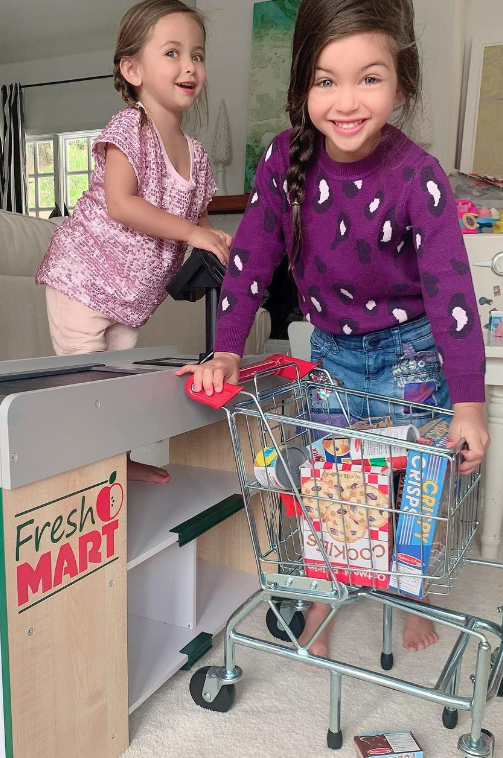
After they practice in their pretend areas, like the Melissa and Doug Market, take them to the real store so they can practice their experiences in real life.
3. Read Aloud Daily
Reading aloud to your child is one of the most important things you can do for your child. It helps with speech development and early literacy skills that will benefit your child for the rest of their life.
Include at least 10-15 minutes of reading aloud daily with your children. The results are amazing!
4. Take Age-Appropriate Field Trips
Kindergartners take in the world around them like little sponges so take your child places.
Try visiting local museums and zoos as often as possible. If you learn about a topic that your child enjoys, find related field trips that will enrich his learning.
5. Visit the Library Regularly
It doesn’t matter if your child reads yet – visiting the library encourages reading literacy. Once your child reaches the age of reading, your child can check out books as often as he likes.
6. Keep Lessons Short
Kindergartners have short attention spans, but that’s okay. When you homeschool, you adjust the lessons to fit the needs of your child.
So, plan short 20-30 minute lessons that have a focused point and plan.
7. Sing Songs and Rhyme
It might seem silly to an adult, but singing songs and rhyming works to help children develop their speaking and listening skills.
Counting songs, like “one, two, buckle my shoe…” are one way to help your child have fun with numbers and learn their order. Find songs that your child thinks are fun and sing them regularly. This also builds their memorization skills.
Things To Avoid When Homeschooling Kindergarten
If you want your homeschool year to go smoothly there are a few homeschooling mistakes you will want to watch out for.
It’s easy to get excited and caught up in the whimsical feeling of homeschooling so being sure to avoid common mistakes can go a long way.
Avoid Copying Public School
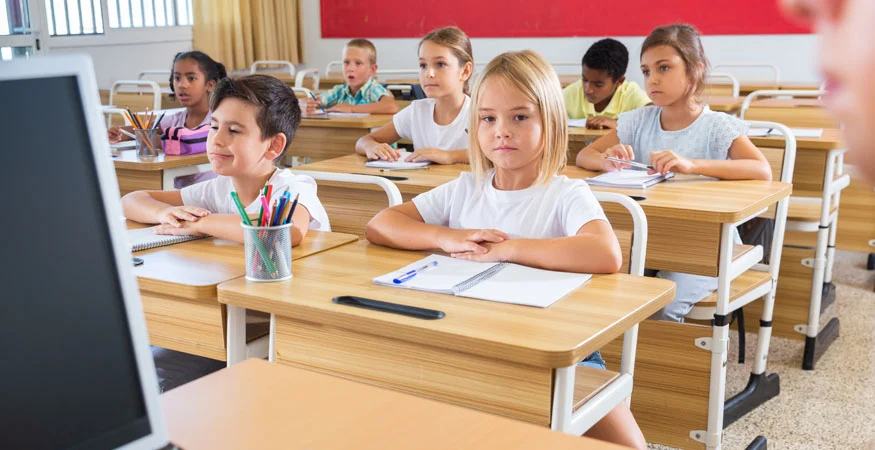
One of the first beginner homeschooling mistakes I often see is parents who just try to recreate school at home. These parents think they need to spend 7-8 hours teaching every day, cover the same subjects as public school and create the exact learning environment.
This is unnecessary for homeschooling and will just create a lot of extra stress and anxiety.
Public school is set up in the way that it is because there is ONE teacher managing a group of 20-30 kids. Since you are homeschooling you are not in the same category.
You have so much more freedom to do what works best for you and your family.
As long as you be sure to stay within the laws of your state you can decide what subjects to teach, how to teach them, or whether you want to do school in the morning, afternoon, or evening.
Avoid Missing out On Fun
A lot of new homeschoolers make the mistake of not making time for fun. The parents feel like they have to be super strict with teaching, but one of the best things about homeschooling is the freedom you have to make learning fun and interesting!
Don’t be afraid to think outside of the box.
Avoid Doing too Much
This is a big one, and an easy trap to fall into. As a new homeschooler, you often feel like you have to do “all the things” and you are worried about your child falling behind.
You may sign up for every co-op, lesson, field trip, and extracurricular activity. While this may look good on paper – it is an easy way to fall into burnout.
Adding activities is a great idea, but keep it simple and manageable.
Avoid Ignoring your Child’s Learning Style
If you are teaching in a way that is opposite to your child’s learning style everything is going to be very frustrating. When choosing your schedule, curriculum, and overall homeschooling philosophy – it is important that you take into account your child’s learning style.
Avoid Comparing your Child to Others
It’s okay that your child takes longer on some subjects and skips ahead on others. Part of homeschooling is taking things at your own pace.
Avoid Focusing too Much on Bookwork
Public school often gives us the mindset that proving our child can pass a test is what matters most. However, this is not actual learning. Learning isn’t memorization and testing skills.
Learning comes from everyday life experiences and the questions your child is naturally curious about.
Remember as Mr. Rogers said “Play is often talked about as if it were a relief from serious learning. But for children play IS serious learning. Play is really the work of childhood.
It is so important to remember this and remember to make kindergarten a year of fun learning!
Do you still have questions about homeschooling kindergarten? Drop them in the comments below! I would love to see how I could help!
